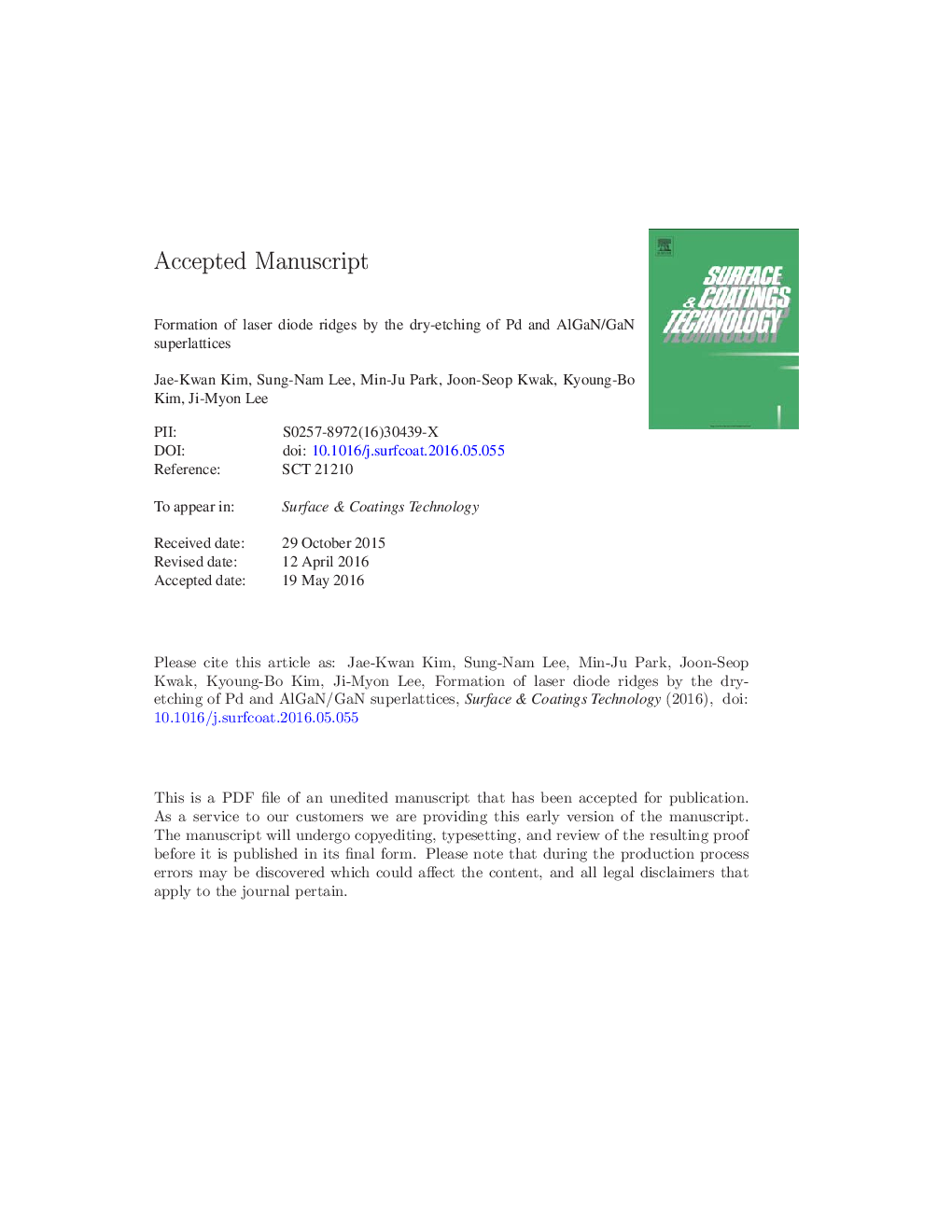| Article ID | Journal | Published Year | Pages | File Type |
|---|---|---|---|---|
| 5465348 | Surface and Coatings Technology | 2016 | 22 Pages |
Abstract
This study examined the dry etching characteristics of palladium and GaN/AlGaN superlattices using Cl2/CHF3 and Cl2/Ar chemistry formed by an inductively coupled plasma system for the fabrication of ridges of laser diodes. Although the etch rates of n-GaN and AlGaN/GaN superlattices were similar using Cl2/Ar chemistry, the etch rate of the latter was quenched using Cl2/CHF3 chemistry due to the formation of a non-volatile fluoride layer and/or high bond strength oxide. The ridge pattern was eroded when the Pd was etched at higher source powers, resulting in non-uniform etched features. In addition, Cl2/Ar chemistry could not etch the Pd layer. Using a 2-step etching process combining Cl2/CHF3 chemistry for Pd with Cl2/Ar chemistry for the AlGaN/GaN SLs, a ridge for the laser diodes was formed successfully with a vertical sidewall and a good etched surface morphology.
Keywords
Related Topics
Physical Sciences and Engineering
Materials Science
Nanotechnology
Authors
Jae-Kwan Kim, Sung-Nam Lee, Min-Ju Park, Joon-Seop Kwak, Kyoung-Bo Kim, Ji-Myon Lee,
